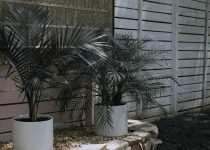Enhance Your Outdoors With Flagstone Garden Edging Ideas
You can enhance your outdoors with flagstone garden edging, which adds a natural and visually appealing touch. Colonial flagstone is a popular choice, offering stability and a seamless look. You can also use Delaware river rock for a unique appearance. Mulch and decorative elements further enhance the aesthetic. By carefully selecting and positioning flagstones, you create a low-maintenance yet beautiful outdoor space. Explore more ideas to transform your garden with flagstone edging.
Table of Contents
Key Takeaways
- Use colonial flagstone for a classic, natural look in garden edging.
- Delaware river rock offers a unique alternative with varied colors.
- Sort stones by size and shape for a cohesive landscape.
- Mulch enhances aesthetics and reduces maintenance.
- Flagstone edging integrates well with patios and walkways.
Materials for Flagstone Landscape Edging
When planning a flagstone landscape edging project, you'll need to gather the right materials.
Colonial flagstone is a popular choice, especially if you're looking for large, flat, heavy, and mostly rectangular stones. For a typical project, you might need about 100 feet of this material.
If colonial flagstone isn't available, consider alternatives like Delaware river rock or mini-boulders for a unique look.
You can source these materials from a local stone distributor, such as those that also sell mulch and gravel. This approach enhances your outdoor space, blending seamlessly with other landscaping projects, including flagstone patios.
Selecting and Preparing Decorative Stones
Selecting the right decorative stones for your flagstone garden edging project involves a thoughtful approach. Consider purchasing a pallet or selecting from a miscellaneous bin, as larger stones are often found on the edges of a pallet. This can add a natural look to your landscaping.
| Stone Type | Price per Square Foot | Common Use |
|---|---|---|
| Sandstone | $15-$20 | Edging, Patios |
| Quartzite | $15-$20 | Walkways, Edging |
| Bluestone | $15-$20 | Patios, Landscaping |
When preparing, sort stones by size and shape to create a cohesive stone landscape. Establish guidelines using stakes and masonry twine for a precise edging project.
Enhancing Edging With Mulch and Finishing Touches
Now that you've carefully selected and prepared your flagstone for the garden edging, it's time to enhance the look with mulch and finishing touches.
A cubic yard of black dyed mulch can add a sleek, natural aesthetic to your flagstone garden edging. Mulch not only boosts the visual appeal but also helps retain moisture and suppress weed growth, making it a low-maintenance choice for your garden beds.
To complete the look, add decorative elements like plants or ornaments along your flagstone walkway. This combination creates a beautiful outdoor space that's both visually appealing and easy to maintain.
Positioning and Setting Flagstone Borders**
To create a stunning flagstone garden border, you'll need to position and set the stones carefully.
This involves selecting large, flat flagstones that fit your landscape design, ensuring they're stable and level. You can use these stones not only for edging but also as stepping stones or even part of a stone wall or retaining walls in your outdoor living space.
As you lay the flagstones, consider integrating them with ground cover plants to enhance the natural look of your garden edging.
This blend of stone and vegetation adds depth and beauty to your landscape, creating a harmonious outdoor living area that complements your garden's natural beauty.
Frequently Asked Questions
What Is the Best Edging for Flagstone?
You'll find that using larger flagstones along the edges provides the best stability and aesthetic for flagstone installations, making plastic edging unnecessary. Stone borders or thicker flagstones are ideal for maintaining a clean look.
What Is the Disadvantage of a Flagstone Patio?
You'll face several disadvantages with a flagstone patio, including high costs, potential for uneven surfaces, slippery surfaces when wet, and the need for regular maintenance to prevent weed growth and maintain appearance.
What to Do With Extra Flagstone?
You can use extra flagstone to create stepping stones, build a small retaining wall, or make a charming bench for your garden. It's also great for edging around plants or creating a pathway.
What Should I Put Between My Flagstone?
You can put crushed gravel, polymeric sand, or stone fines between your flagstones. Crushed gravel provides a clean look and stability, while polymeric sand offers weed resistance, and stone fines settle well over time.


